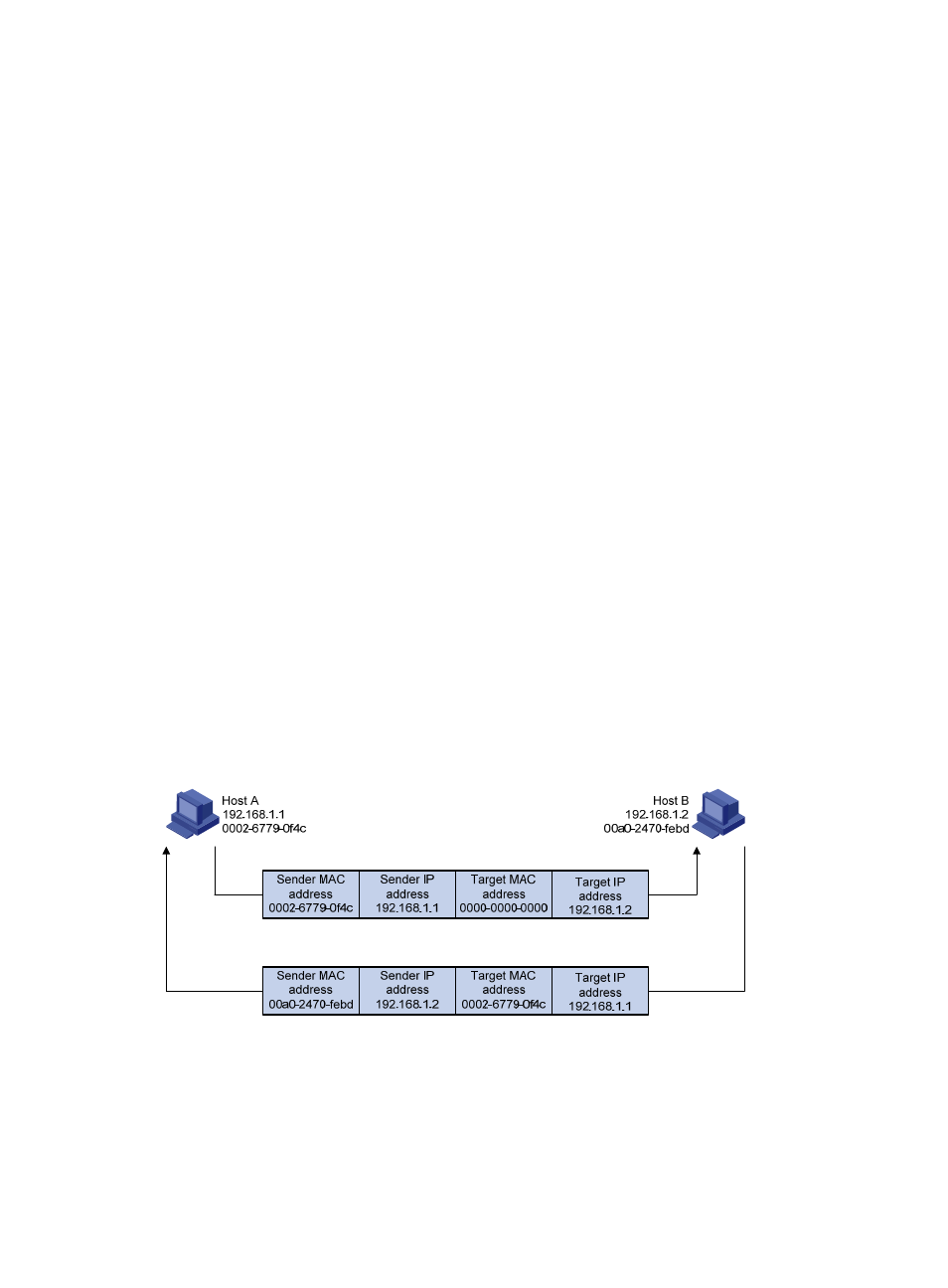Operation of arp – H3C Technologies H3C SecBlade NetStream Cards User Manual
Page 129

114
•
Sender protocol address: Protocol address of the device sending the message.
•
Target hardware address: Hardware address of the device the message is being sent to.
•
Target protocol address: Protocol address of the device the message is being sent to.
Operation of ARP
If Host A and Host B are on the same subnet and Host A sends a packet to Host B, as shown in
, the resolution process is:
1.
Host A looks in its ARP table to see whether there is an ARP entry for Host B. If yes, Host A uses the
MAC address in the entry to encapsulate the IP packet into a data link layer frame and sends the
frame to Host B.
2.
If Host A finds no entry for Host B, Host A buffers the packet and broadcasts an ARP request using
the following information:
•
Source IP address and source MAC address: Host A’s own IP address and the MAC address
•
Target IP address: Host B’s IP address
•
Target MAC address: An all-zero MAC address
Because the ARP request is a broadcast, all hosts on this subnet can receive the request, but only the
requested host (Host B) will process the request.
1.
Host B compares its own IP address with the target IP address in the ARP request. If they are the
same, Host B:
•
Adds the sender IP address and sender MAC address to its ARP table.
•
Encapsulates its MAC address into an ARP reply.
•
Unicasts the ARP reply to Host A.
2.
After receiving the ARP reply, Host A:
•
Adds the MAC address of Host B to its ARP table.
•
Encapsulates the MAC address into the packet and sends it to Host B.
Figure 38 ARP address resolution process
If Host A and Host B are not on the same subnet:
1.
Host A sends an ARP request to the gateway. The target IP address in the ARP request is the IP
address of the gateway.
2.
After obtaining the MAC address of the gateway from an ARP reply, Host A sends the packet to the
gateway.